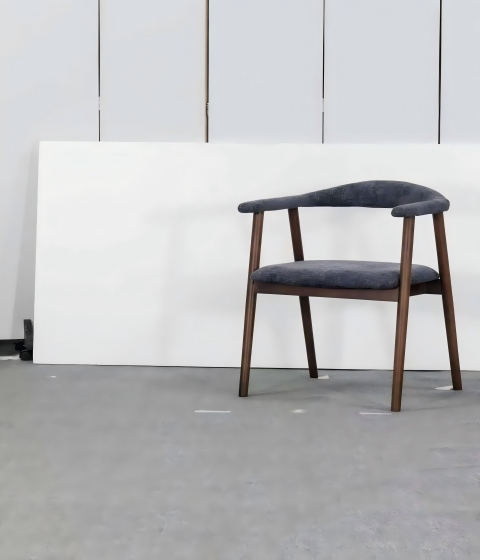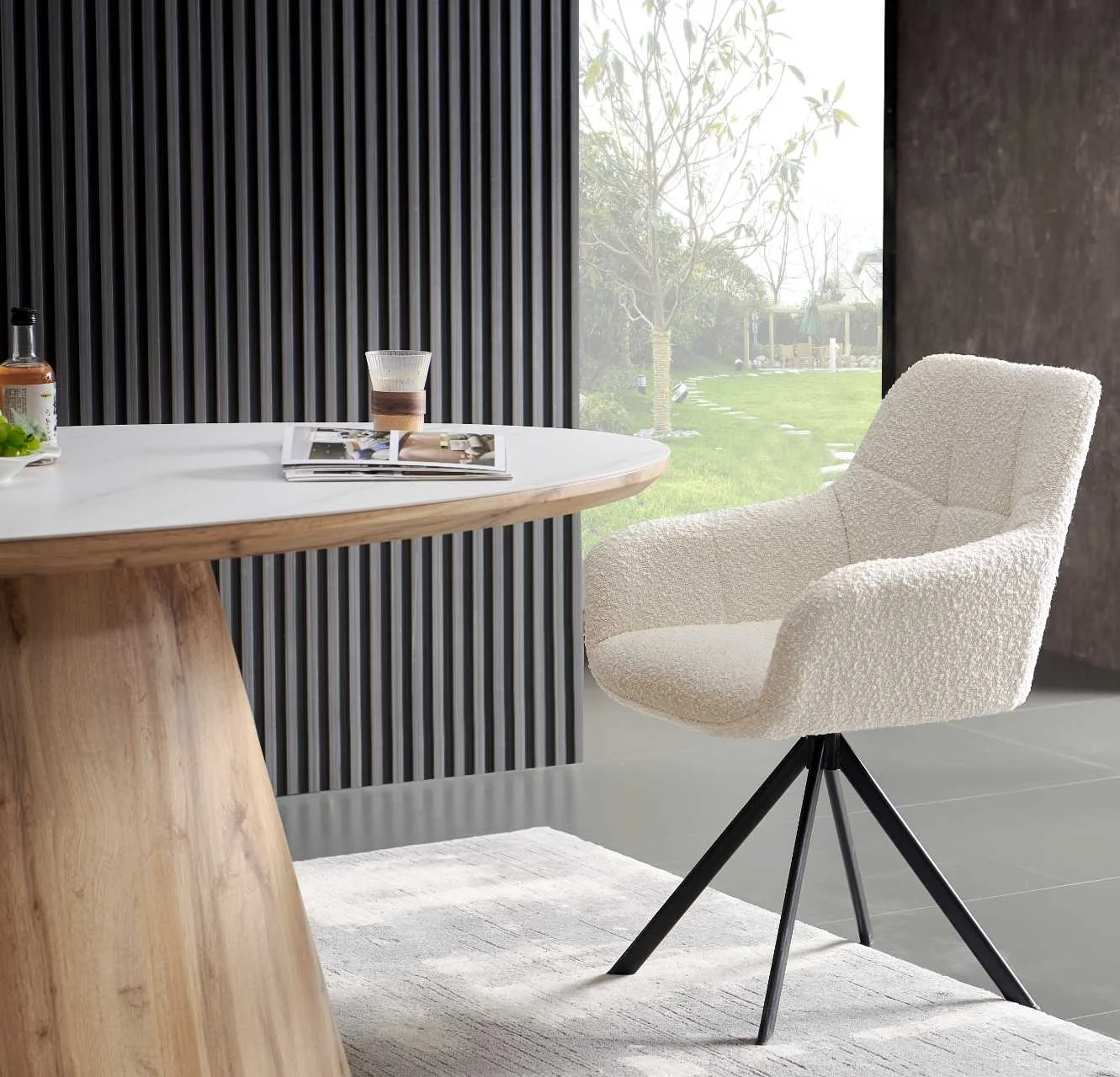2025 Global Furniture Export Landscape: Emerging Opportunities in Europe, Southeast Asia, and the Middle East

Imagine a load of smooth MDF dining tables unloading from a cargo ship in Rotterdam. They’re headed straight for lively stores in Amsterdam. Or picture modular panel cabinets pulling up to tall buildings in Jakarta. They fit perfectly into the routines of young workers there. That’s the beat of the furniture shipping business as we head into 2025. Supply chains have finally shaken off those old snarls and tough economic gusts. Now the field is gearing up for a careful comeback. Trade amounts worldwide are starting to climb. Sellers are scanning for new spots in places that crave solid items mixing use and looks.
This goes beyond just figures in a ledger. It ties into actual changes. City folks want small sofas for tight living spaces. Hotel groups are grabbing tough ottomans for entry areas. Office heads seek out height-changing desks to help crews stay sharp. As we dig into the 2025 global furniture export landscape, the fresh chances in Europe, Southeast Asia, and the Middle East pop out. These spots don’t promise huge rushes. But they do hold firm, reliable rises if you handle it right. We’ll go through each area one by one. We’ll pull from new stats and real-site views to point out where the wise bets land. If you’re a long-time dealer or just testing global streams, these patterns give a clear guide to even wins.
Navigating the 2025 Global Furniture Export Landscape
The furniture swap doesn’t stand alone. It follows swells in new homes, buyer trust, and big happenings like trade gatherings that lock in pacts fast. For 2025, the whole world’s market lands at about $730 billion in sales. That’s a step up from last year. But it’s expanding at a fair 2.8% each year through the 2030s. No big bangs here. Still, it’s plenty to keep plants running and docks full.
Sellers deal with a varied mix. E-sales keep eating into old-school shops. This drives need for easy-pack panel furniture. It ships light and puts together fast. On the flip side, green rules are getting stricter. Consider EU orders on reused stuff. They might trip up loads that don’t match. But the rewards? Our three main areas are soaking up more incoming goods. Local making can’t keep pace with jumping wants.
For a sharper look, check this simple table of expected sizes for these prime zones in 2025. The numbers come from field watchers. They show clear why sellers must stay alert.
|
Region |
Projected 2025 Revenue (USD Billion) |
Annual Growth Rate (CAGR to 2030) |
Key Driver |
|
Europe |
217 |
1.8% |
Urban renewal projects |
|
Southeast Asia |
13.8 |
3.1% (manufacturing output) |
Middle-class expansion |
|
Middle East |
15.7 (GCC focus) |
4.1% |
Hospitality boom |
Facts like these highlight the field’s lean toward even buildup. In Europe, it’s swapping out beat-up goods in old flats. Southeast Asia? Think of Jakarta’s skyline shooting up condos every week. Each one calls for a side table or so. And the Middle East—that’s where fancy sofas land in wide homes. Sellers who sync with these beats find the road easier.
Spotlight on Europe: Steady Demand Amid Shifts
Europe’s furniture world feels like a trusty old leather seat. It’s cozy. But it bears some marks from late rough patches. The market reaches $217 billion in 2025. Growth sits near 1.8% as buyers pick gear that holds up. Price rises have made people pause on big buys. Yet that’s cracking open paths for middle-cost shipments. Picture cushioned easy chairs in plain cloths. Or pull-out dining tables that shift for kin meetups.
What sets the pace? Green habits lead. The EU’s Green Deal means business. It’s penalties for bringers skipping emission tracks. Sellers sending firm wood side tables or steel-rimmed desks now flash tags like FSC. That skips fees. Then comes the after-plague work mix. Part-time office life boosts calls for at-home work spots. Height-shift desks sell quick in spots like Germany and the Netherlands.
Look at the UK. Exit from the EU added paperwork drags. But 2025 eases that. Dealers note a 5% jump in pulls for build-your-own panel furniture. It’s ideal for short-term renters in spots like London. And skip over meets like the MEBEL Expo in Moscow. It runs from November 24 to 27, 2025. This East Europe draw pulls in over 500 show folks. One stall talk can snag deals for sofa groups bound for Russian inns. A seller I chatted with last year inked a pact there for 200 ribbed-leg dining tables. It shows handshakes still close the loop.
Consumer Trends Shaping Exports
- Eco-Conscious Buyers: More than 60% of EU pickers now check tags for reused bits. This lifts pull for MDF shelves with low-smell coats.
- Space-Savers: In packed towns like Paris, small ottomans work as bins too. They trim ship costs by 15% over bigger picks.
- Tech Integration: Desks with wire hides are big in north lands like Scandinavia. Remote jobs stick around there.
These pulls tie a web of chance. Sellers mixing strong build with rule fits will dig out true holds in this spot.
Southeast Asia: Rapid Urbanization Fuels Growth
Switch over to Southeast Asia. The feel turns lively. Towers cut through Manila’s fog. And Bangkok’s shops hum with crowds scanning new house stuff on off days. The area’s furniture field weighs in at $13.8 billion for 2025. Making growth runs 3.1% year by year. Wider Asia-Pacific home gear? That’s a $148 billion force. It climbs 6% each year as paychecks grow.
City rush powers it. Vietnam gained 1.2 million town folks last year alone. Each needs starts like turn dining chairs or cloth-covered beds. Guest spots add fire too. See Bali inns updating wait areas with weather-hard ottomans. Indonesia’s ship bases pump out items. But brings cover holes in top cloth work. Local cloths pair with world flavors there.
A true case: A Vietnam bringer grabbed 500 metal-foot side tables last three months for Ho Chi Minh City’s coffee joints. They came flat. Folks put them up in minutes. And they caught eyes with rough style. Fees stay low under 5% for most wood bits. But move plans count. Singapore docks take the load. Still, wet-season holds can sting.
Hot Spots and Product Fits
- Vietnam and Indonesia: Aim at cheap panel cabinets for fresh flats. Wants jump 8% yearly.
- Thailand’s Tourism Rebound: Sofas and low seats for stay homes. With cloth picks in wood-print styles.
- Philippines’ Retail Push: Online bigs like Lazada hunt ready desks for school starts.
Grasping local ways pays back. In Malaysia, kin dinners hold sway. So stretch tables in soft woods move fast. It’s a field that gives back to sellers who hear—and hit dates.
The Middle East: Luxury and Modern Living on the Rise
Brush off those fine pads. The Middle East mixes rich flair with daily smooth. The GCC furniture field alone touches $15.7 billion in 2025. It grows at 4.1% as huge works remake views from Dubai to Riyadh. Bigger Middle East outlooks? $28.6 billion this year. It’s bound for $41.6 billion by 2033.
Fuel cash drives it. But shifts away from oil do too. Saudi Vision 2030 pours billions into guest trade. That calls for front-room gear yelling greet. Think soft sofas in plain skins. UAE’s outsider wave wants West-style desks for work nooks in shiny stacks. High-end isn’t side here. It’s main. Some 20% of pulls hit top cloth.
Think of Dubai’s Jumeirah patch. An inn group there traded old ottomans for build sets last autumn. Vent holes in cloths. Gold touches. The switch? Stay notes rose 12%. Sellers tap this with tweaks. Sintered-stone tops on tables give stone views sans the load.
Hurdles sit there. High wet air tests cloths. And bring fees smack 5-10% on wood. But no-fee zones in Jebel Ali soft the hit.
Growth Levers to Watch
- Hospitality Overhaul: Qatar’s after-Cup builds need over 10,000 sit spots yearly.
- Residential Surge: Abu Dhabi’s big homes seek panel closets in sharp coats.
- E-Commerce Leap: Noon.com’s up means fast-ship chairs beat made-to-order by 3 to 1.
This area’s mix of shine and use makes it a prize for sellers with bendy stocks.
Charting a Course: Key Strategies for Exporters
So what turns these chances into pulls? Kick off with base work. Hunt trade meets. The MEBEL Expo’s key for Europe. Dubai Design Week fires up the Gulf. Forge local links. A spreader in Jakarta once flipped a test sofa into a 1,000-run by easing pads for hot air.
Rule fits can’t skip. Europe’s REACH calls for stuff opens. Southeast Asia likes ISO-stamped plants. And price tags? Bake in hauls. Box rates from China to Rotterdam float at $2,500. But full panel hauls cut that each piece.
- Diversify Stock: Blend cloth wins like turn chairs with sturdy desks for mixed airs.
- Go Digital: Sites like Alibaba link holes. But add VR hall walks.
- Sustainability Edge: Reused MDF tables? They pull 10-15% extra in green-spot fields.
Little steps like these add up. A seller I know kicked off with 50-test runs to Riyadh. By year’s close, it ran steady quarter streams.
Why Partner with Forest Furniture?

In a packed trade, Forest Furniture stands firm as a steady base for sellers hunting the 2025 global furniture export landscape. Based in Tianjin, China, with plants across the north, we’ve shaped a flow chain that shapes raw MDF and metal into ship-ready bits sans usual snags. Our range covers firm wood tables that take day eats. Cloth sofas in last-long fabrics for sit spots. And panel cabinets that slide neat into now wardrobes.
What marks us? It’s the small bits. Ribbed-leg dining sets for that rough kick. Or height desks mixing work with straight lines. We fit B2B pulls. Dealers filling Europe shops or Southeast Asia inns. We hand steady strong from tuned lines. Through years, we’ve sent to far spots from Moscow to Manila. We’ve picked what works. Fast gate passes. Bendy low starts at 50 bits. And shifts like sun-hard cloths for Middle East rays. If fresh chances in Europe, Southeast Asia, and the Middle East have you mapping paths, Forest waits with bits that match.
Conclusion
The 2025 global furniture export landscape isn’t a quick dash. It’s a long run with good breaks in Europe, Southeast Asia, and the Middle East. These fields, each with their own beats, give sellers shots to plant true bases amid even rises. From Europe’s green swaps to the Middle East’s big works, the tie is want for wise, bendy furniture. Keep ear to patterns. Rely on firm mates. And you’ll steer it all with sure steps. The loads in your ahead? They’re worth the trip.
FAQs
What does the 2025 global furniture export landscape look like for Europe?
Europe’s market steadies at around $217 billion, driven by sustainability pushes and hybrid work setups. Exporters see gains in compact, certified pieces like adjustable desks, especially with events like MEBEL Expo opening doors to Eastern buyers.
How are emerging opportunities in Southeast Asia shaping furniture exports in 2025?
Urban growth propels a $13.8 billion market, with hotspots like Vietnam craving upholstered beds and panel storage for new homes. Quick-assembly options thrive here, fueled by a 6% regional climb in home goods spending.
Why is the Middle East a key player in the 2025 global furniture export landscape?
With GCC revenues hitting $15.7 billion, luxury hospitality and residential projects demand high-end sofas and modular tables. Vision 2030 initiatives in Saudi Arabia alone could absorb thousands of units, rewarding versatile, climate-tough designs.
What strategies help exporters tap emerging opportunities in Europe, Southeast Asia, and the Middle East?
Focus on compliance—like EU green standards—and local partnerships. Start small with trials, like 50-unit sofa runs, to test waters while leveraging e-commerce for faster reaches.
How can suppliers like Forest Furniture support navigation of the 2025 global furniture export landscape?
Forest offers B2B-ready lines, from metal-frame dining tables to fabric-upholstered ottomans, with flexible shipping to these regions. Their northern China setup ensures quality and speed for steady export flows.


